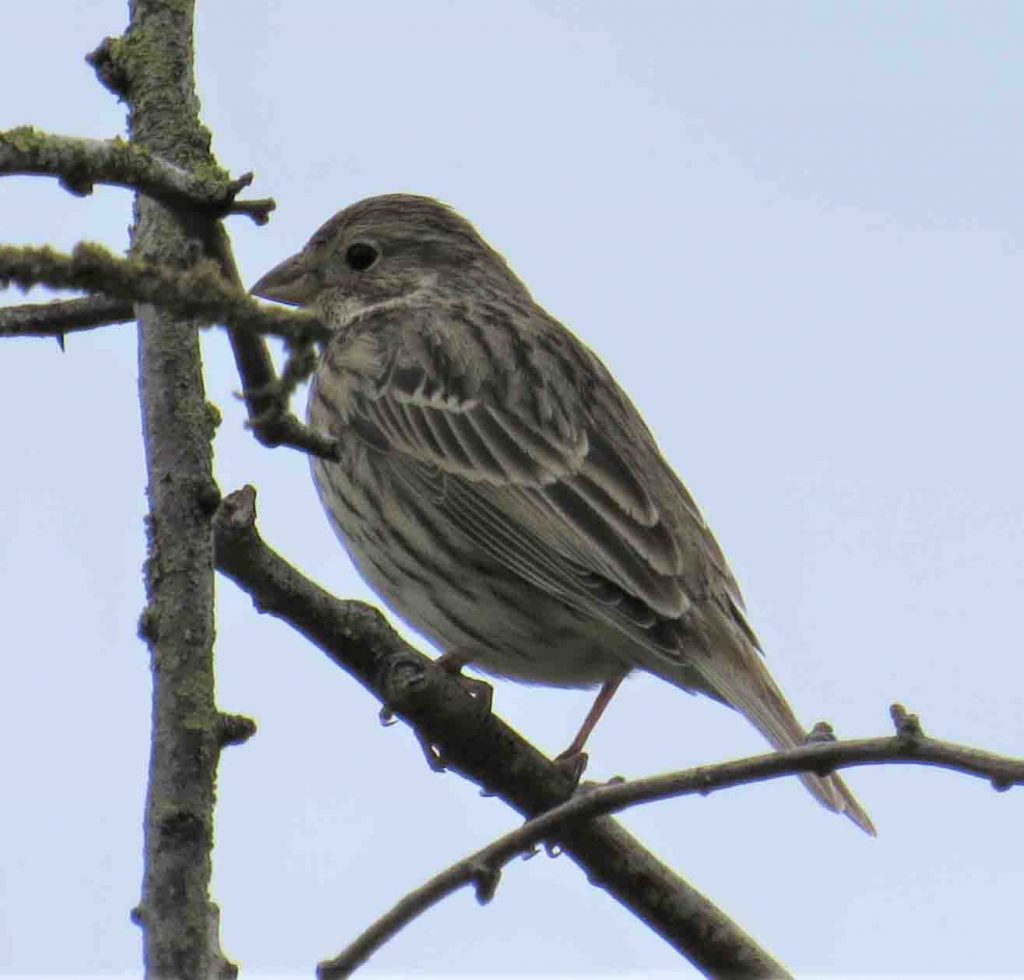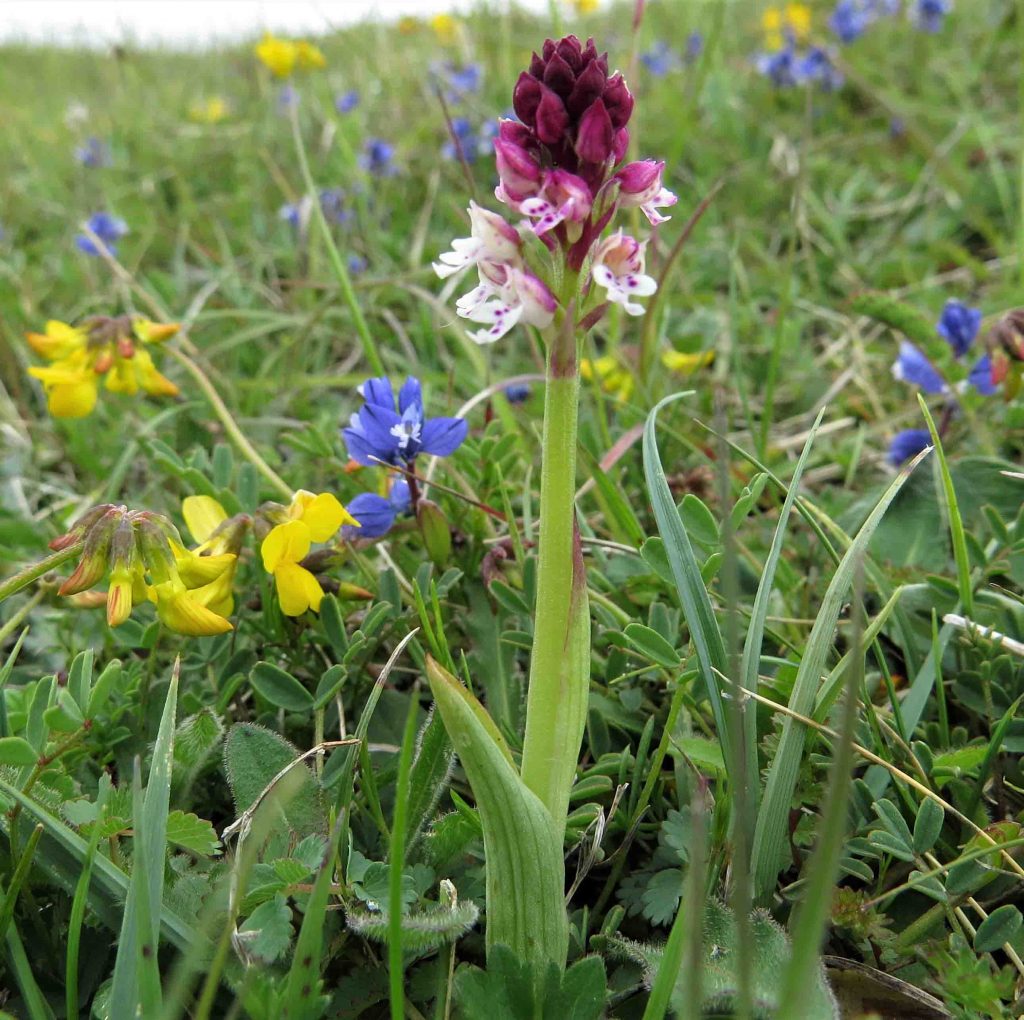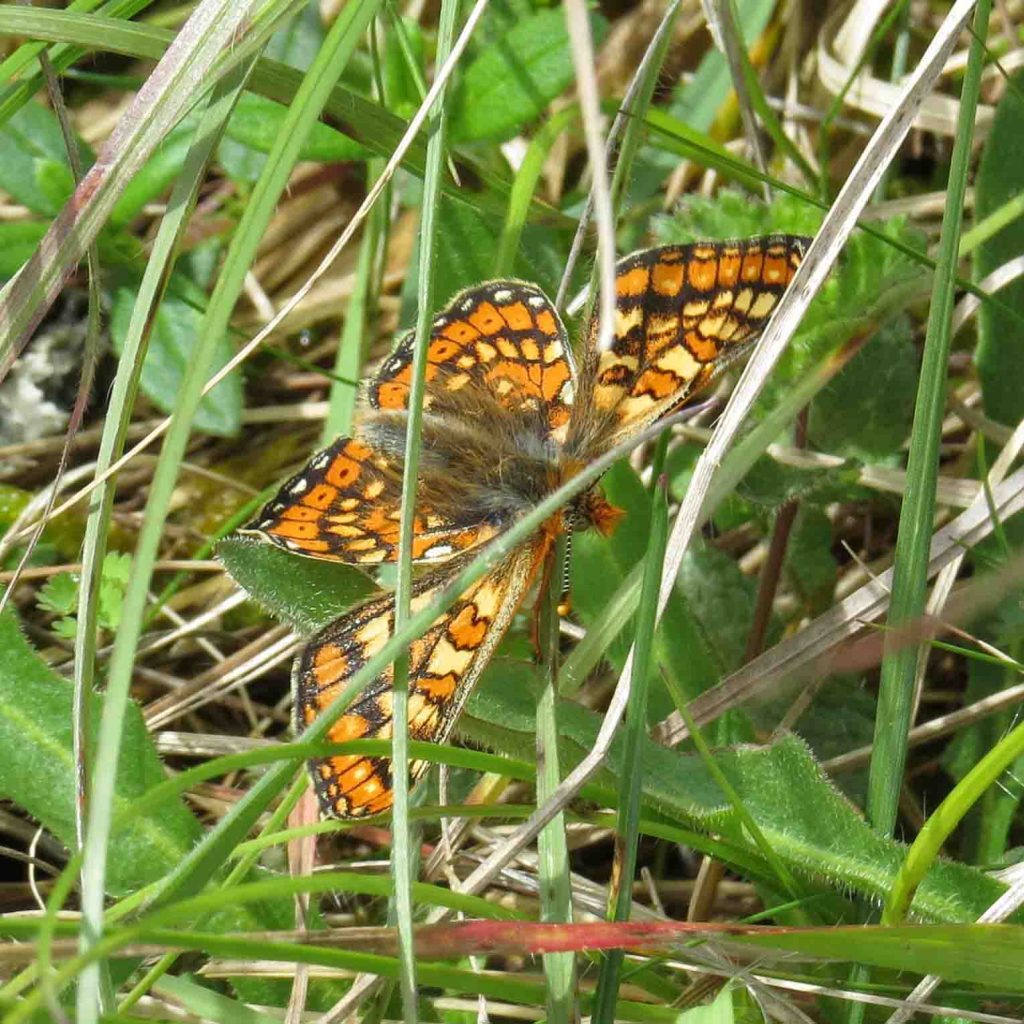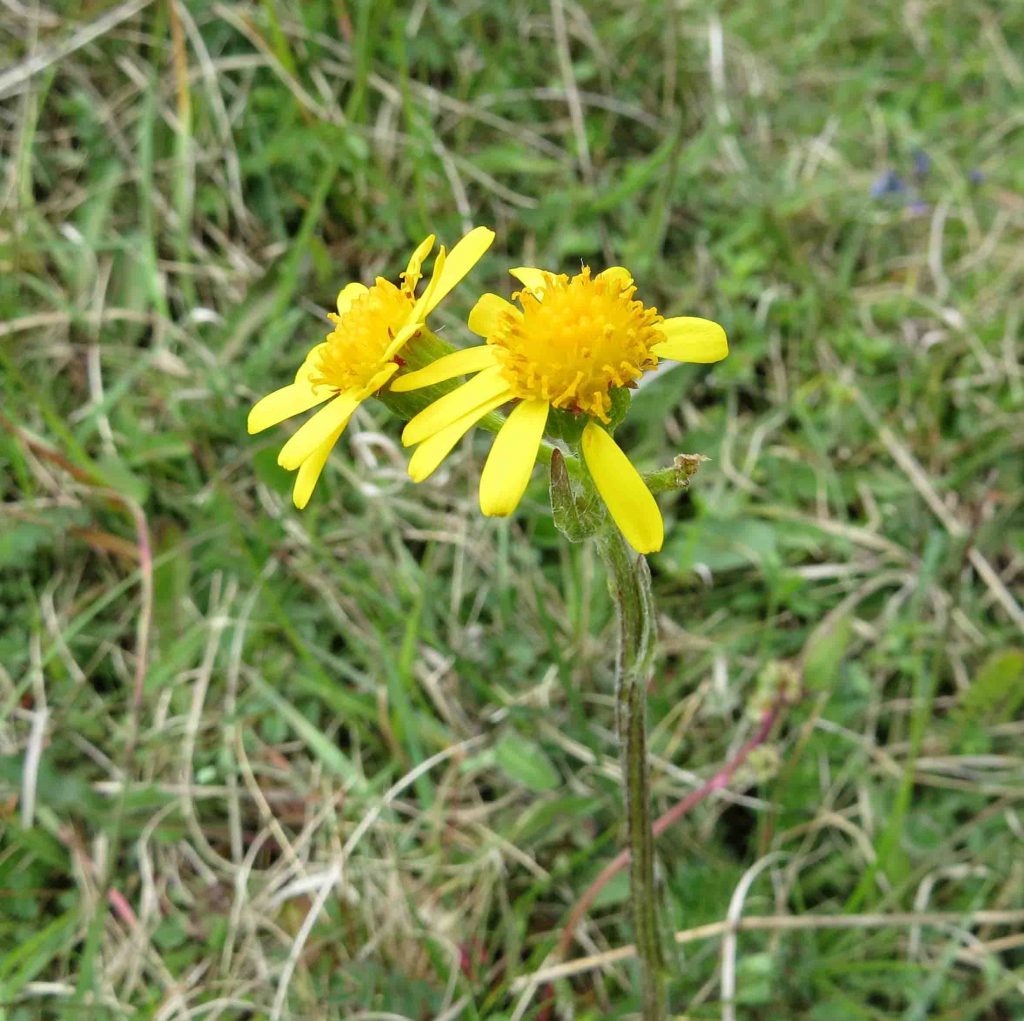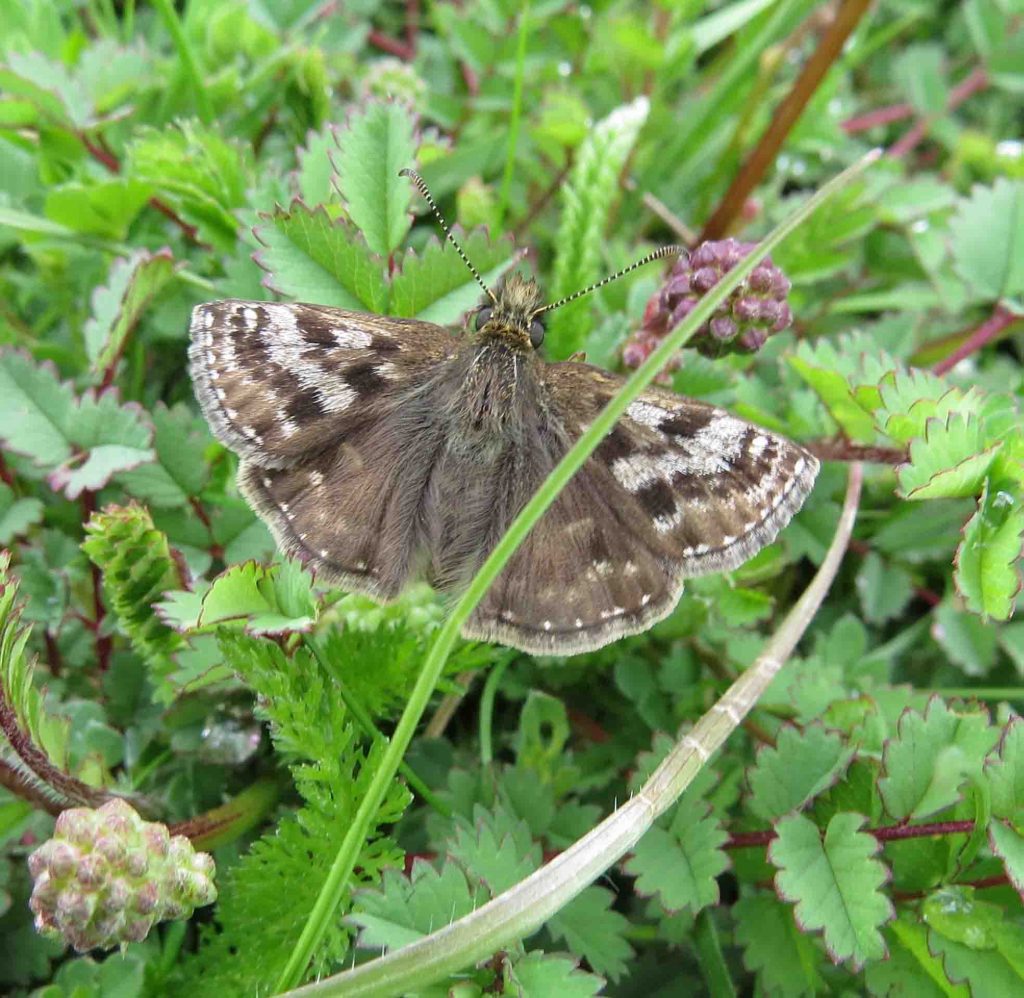Following on from Jim Asher’s excellent January talk to the Society about Aston Upthorpe Downs, Jan and Laurie Haseler led a walk there on Saturday 22 May. The recent relaxation of the rules for outdoor gatherings meant that it was no longer necessary to find extra leaders and put on extra walks. It was a cloudy morning but the gales of the previous day had died down. While members gathered at the grain dryer, nesting Swallows flew into the building and a Corn Bunting sang, first from a wire and then from the top of a Hawthorn bush. The group set off up the track towards Juniper Valley, diverting after a short distance onto the adjacent strip of access land which includes two legs of the Aston Upthorpe butterfly transect. It is sheltered with herb-rich turf and, in sunny weather, would have been a good place to find species such as Grizzled and Dingy Skipper – but under cloudy skies, only a single Green Carpet moth was seen. Flowers seen here included Chalk Milkwort, Cowslip and Salad Burnet.
The walk continued into Juniper Valley, which unfortunately is not in a particularly good condition at present. Many Juniper bushes dot the valley sides, but they are not regenerating and the valley is seriously over-grazed by rabbits. The good news is that the charity Plantlife has recently secured funding to help restore the valley, by putting up rabbit-proof fencing, controlling rabbit numbers and reintroducing limited grazing by sheep. Part way up the steep valley side is the Pasqueflower exclosure, which is protected by rabbit-proof fencing. Inside were Cowslips, Chalk Milkwort and the feathery seed-heads of Pasqueflowers, contrasting with the short, flower-free turf on the outside. Nearby, Plantlife staff and volunteers had recently found about 50 leaf rosettes of Field Fleawort. Also seen here were leaf rosettes of Hoary Plantain. A Barberry bush with yellow flowers was sprawling amongst the mixed scrub and Juniper.
Returning to the main track, the walk continued uphill. Skylarks sang overhead and there were flowers on the Wayfaring-tree bushes. Turning off along Grimm’s Ditch, the next track led to Oven Bottom, another area of open access land. Rabbit grazing is under control here and the chalk grassland is in superb condition. On the valley sides were sheets of dark blue Chalk Milkwort and golden yellow Horseshoe Vetch and Common Rock-rose was in flower on some of the ant hills. A total of 18 tiny Burnt Orchids were found, some singly, some in clusters of up to 4 flower heads. As each was found, it was marked with a cane to protect against accidental trampling. Then higher up the valley side, 2 flower stems of Field Fleawort were found. One was about 18cm tall with 2 flower heads, the other was shorter with a single flower head. Then the sun came out and butterflies started to appear. Two Marsh Fritillaries were controversial sightings. Several years ago, the colony at Seven Barrows failed and the species was thought to be locally extinct. But in 2020, it started to be widely reported across the region, including from Juniper Valley and Oven Bottom, perhaps as the result of unofficial releases. Also seen were several Dingy Skipper and Small Heath butterflies, together with both male and female Common Heath moths, a Fox Moth and a Common Swift moth. On the walk back to the start, Musk Thistle was spotted in an adjacent field and a Lesser Whitethroat was singing from a flowering Hawthorn next to the track.
Pictures by Fiona Brown

